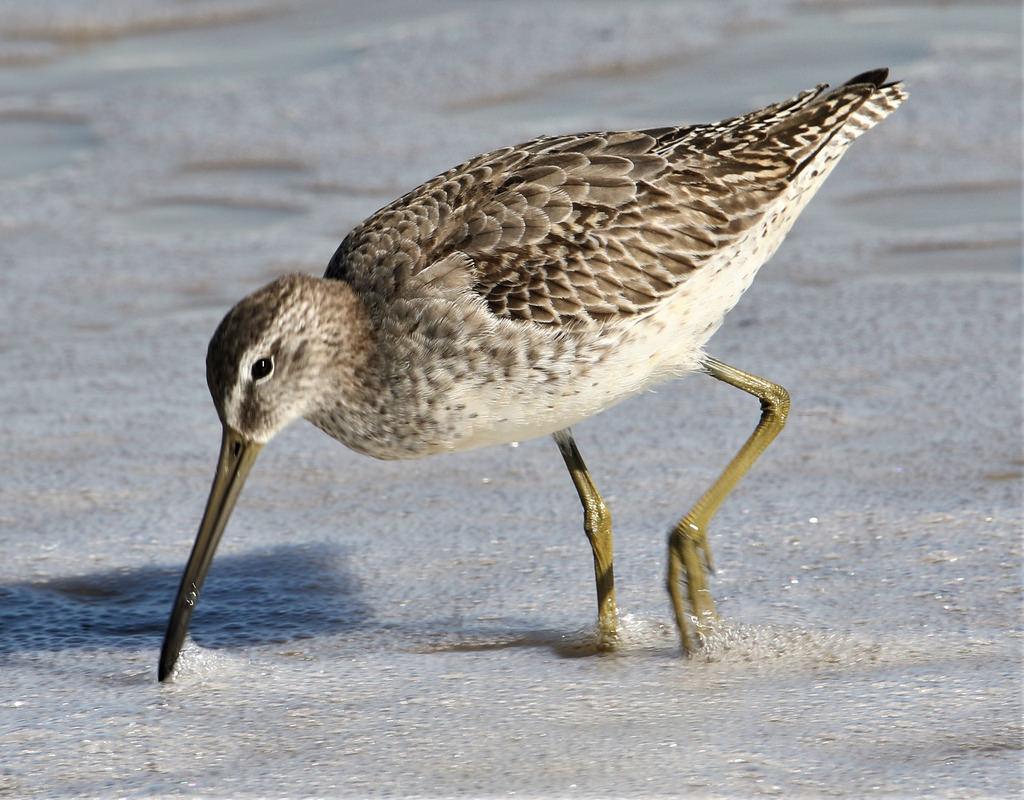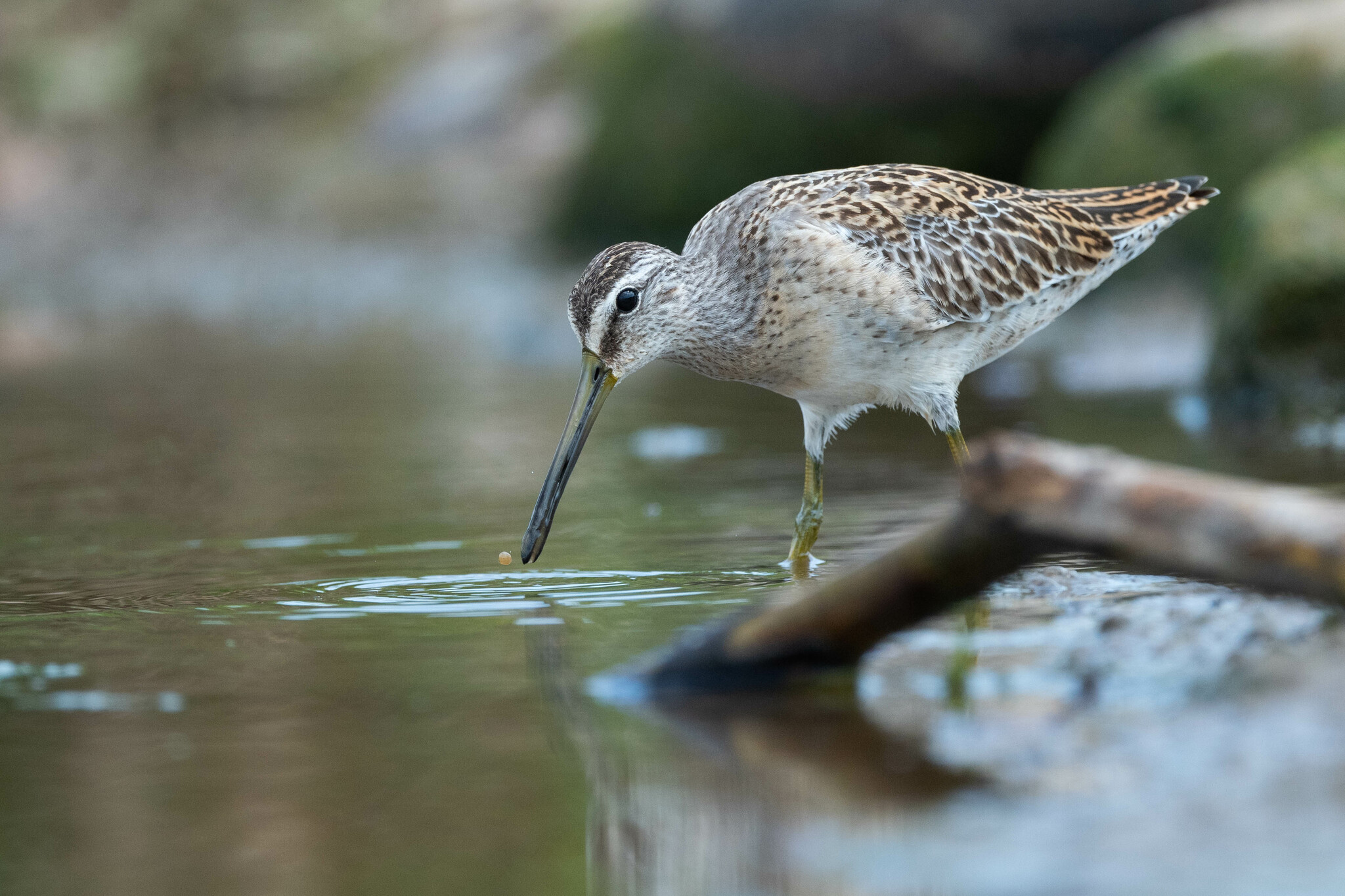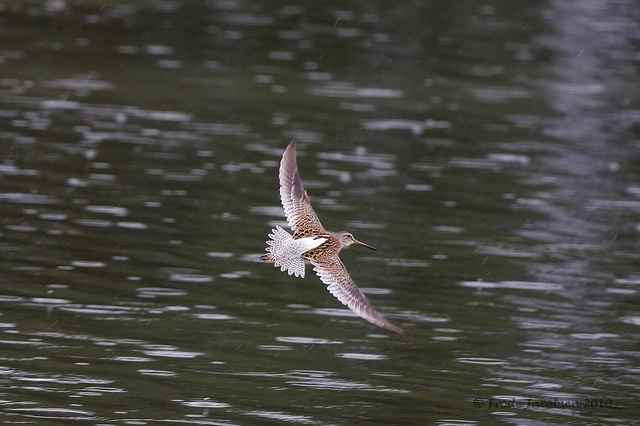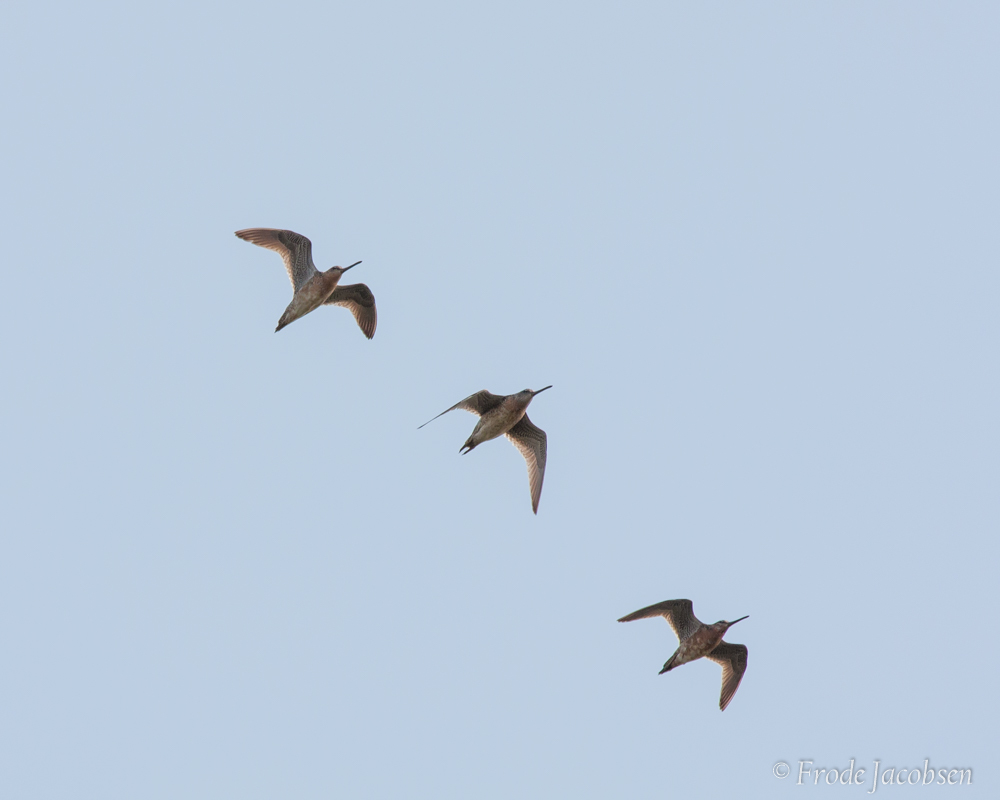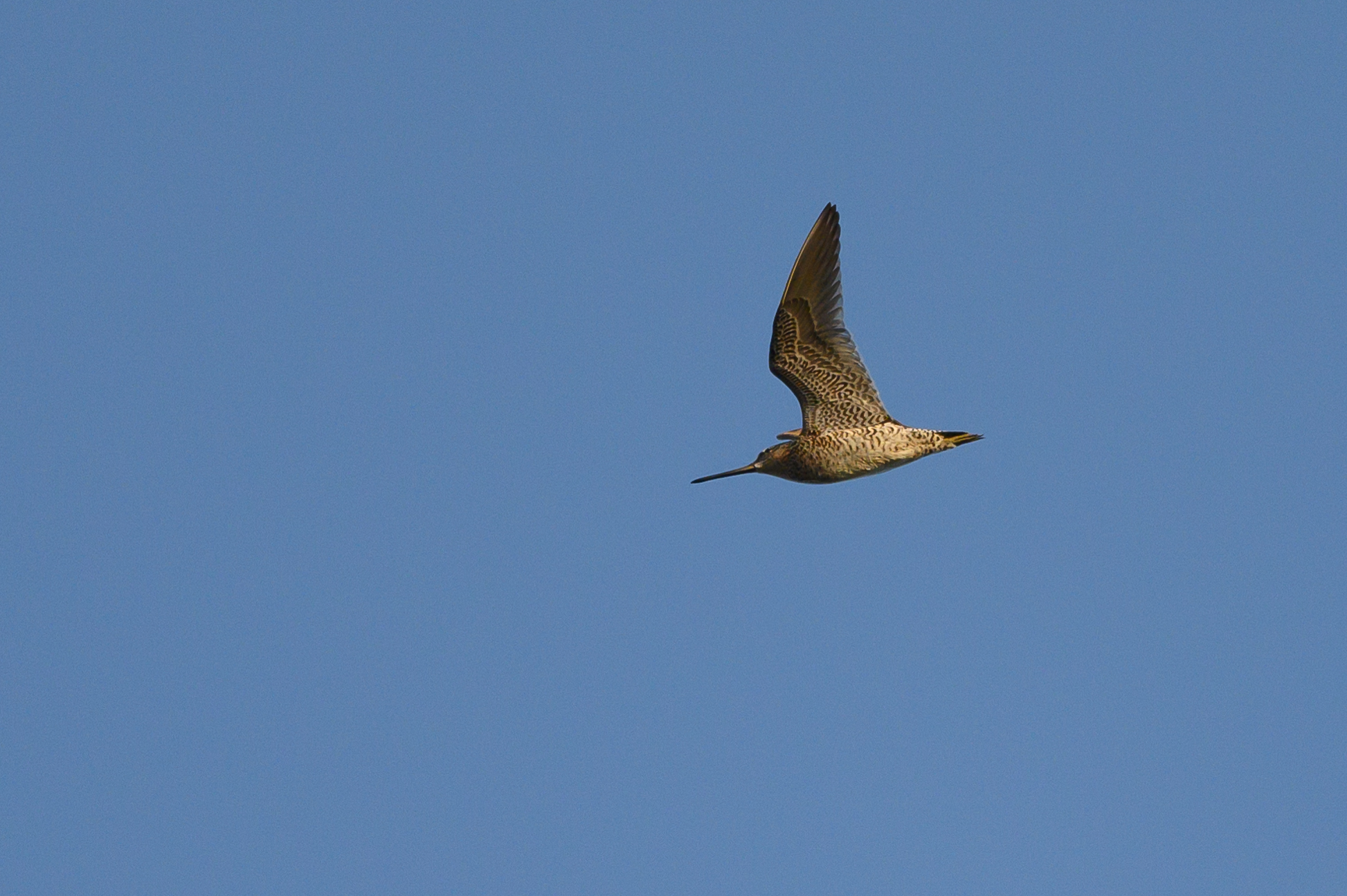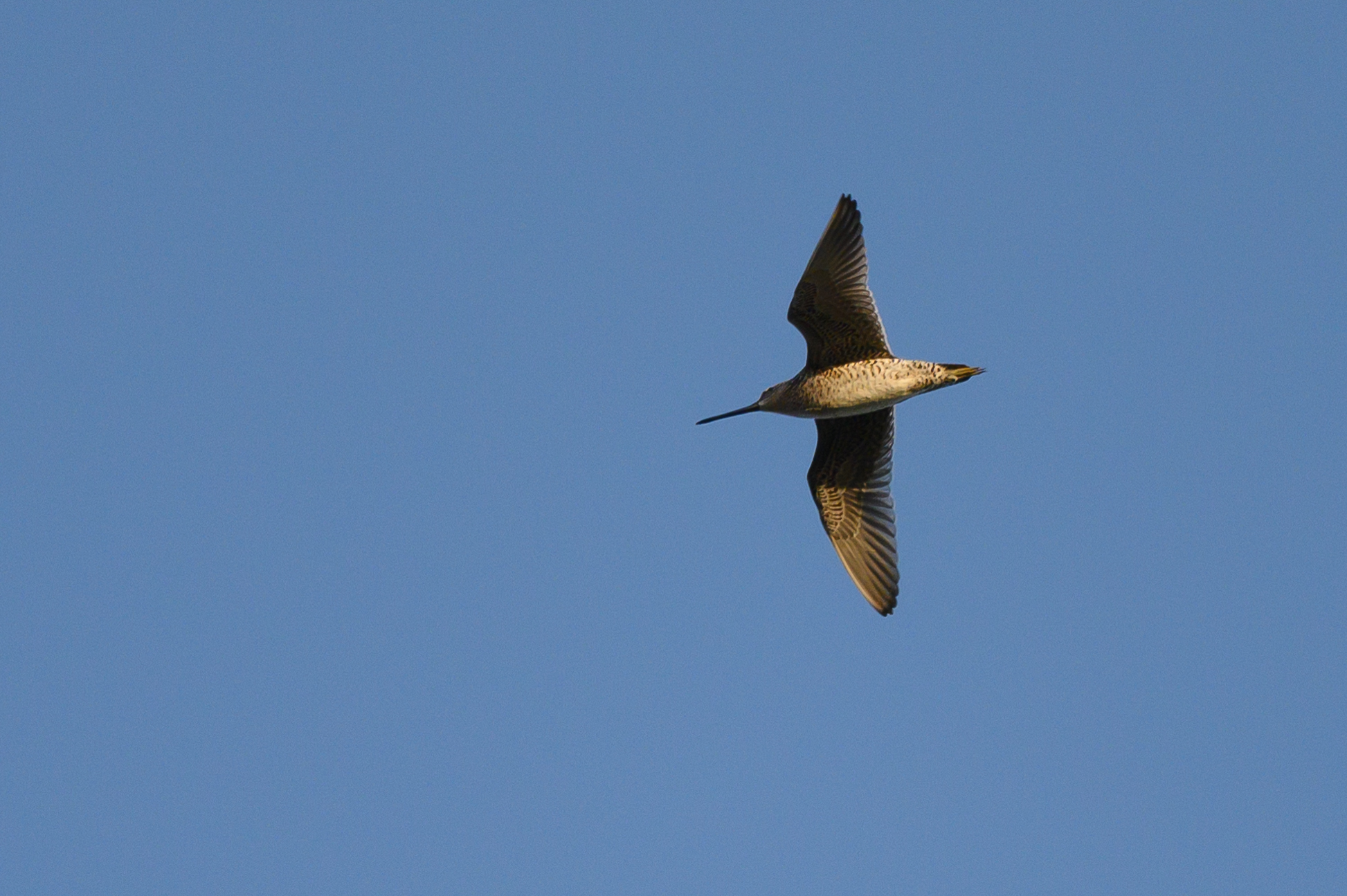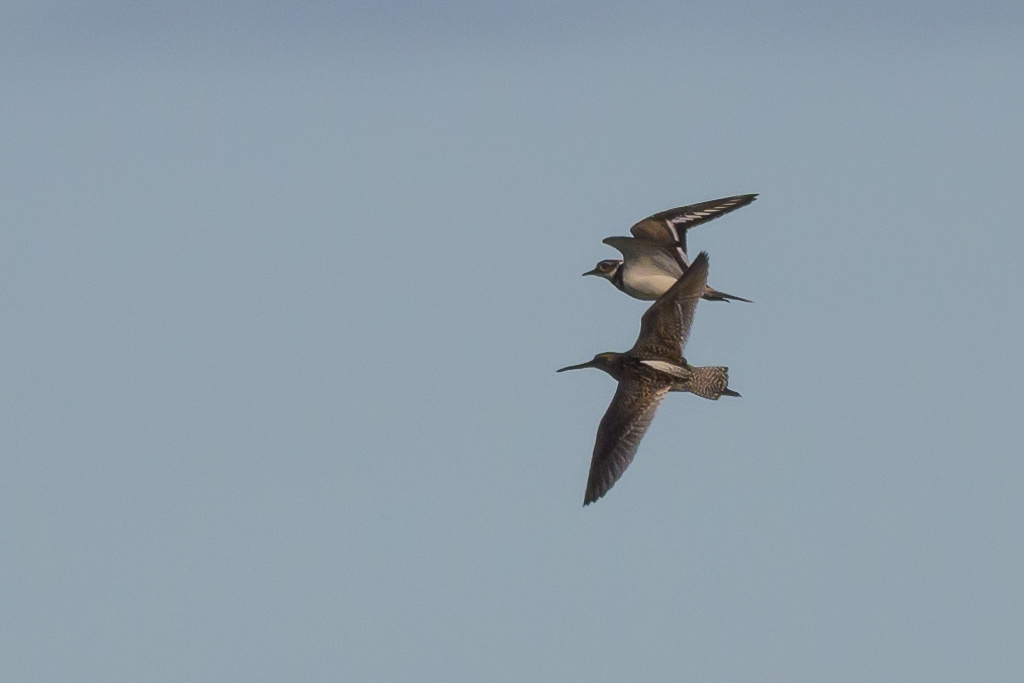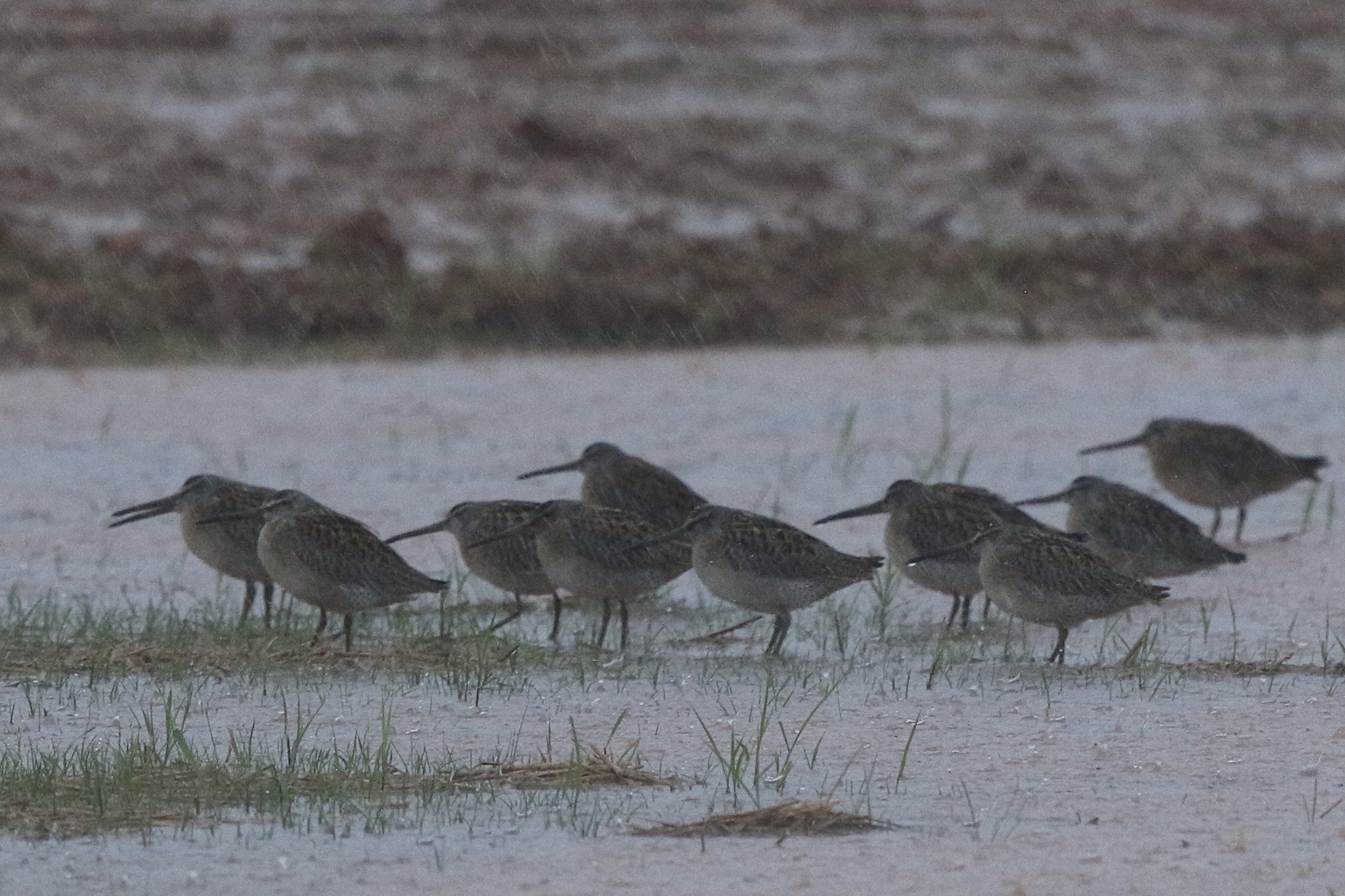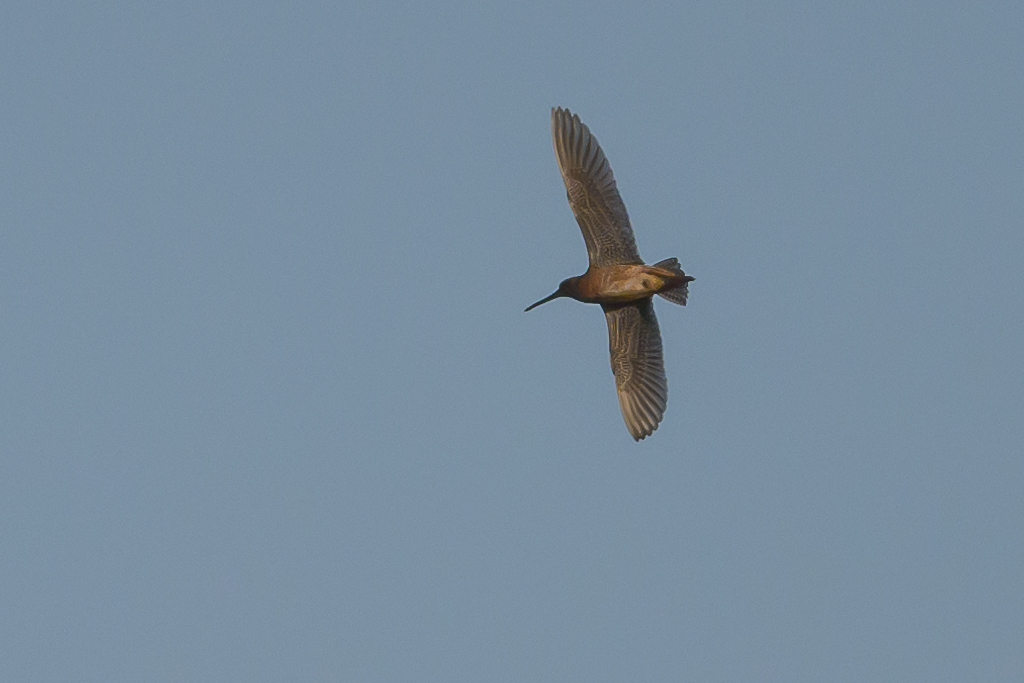Map Snapshot

























146 Records
Short-billed Dowitcher in Montgomery Co., Maryland (7/11/2024). (c) Stephen John Davies, some rights reserved (CC BY-NC). - Stephen John Davies via iNaturalist.
Description
Compare very similar Long-billed Dowitcher, which is distinguished by voice and by subtle plumage and structural details. Two Short-billed Dowitcher subspecies occur regularly in Maryland, griseus and hendersoni.
Seasonality Snapshot
Source: Wikipedia
| Short-billed dowitcher | |
|---|---|

| |
| Scientific classification | |
| Domain: | Eukaryota |
| Kingdom: | Animalia |
| Phylum: | Chordata |
| Class: | Aves |
| Order: | Charadriiformes |
| Family: | Scolopacidae |
| Genus: | Limnodromus |
| Species: | L. griseus
|
| Binomial name | |
| Limnodromus griseus (Gmelin, JF, 1789)
| |

| |
Breeding Migration Nonbreeding
| |
| Synonyms | |
| |


The short-billed dowitcher (Limnodromus griseus), like its congener the long-billed dowitcher, is a medium-sized, stocky, long-billed shorebird in the family Scolopacidae.
It is an inhabitant of North America, Central America, the Caribbean, and northern South America.[2] It is strongly migratory; it completely vacates in breeding areas during the snow-bound months.[3] This species favors a variety of habitats including tundra in the north to ponds and mudflats in the south. It feeds on invertebrates often by rapidly probing its bill into mud in a sewing machine fashion.[4] It and the very similar long-billed dowitcher were considered one species until 1950.[5] Field identification of the two American Limnodromus remains difficult today. Distinguishing wintering or juvenile short-billed dowitchers from the long-billed species is very difficult and, even given examination their subtlety different body shapes, cannot always be isolated to a particular species. They differ most substantially in vocalizations. The names of American dowitchers are misleading, as there is much overlap in their bill lengths.[4][5] Only a small percentage can be identified by this character alone.[5]
Taxonomy
[edit]The short-billed dowitcher was formally described in 1789 by the German naturalist Johann Friedrich Gmelin in his revised and expanded edition of Carl Linnaeus's Systema Naturae. He placed it in the genus Scolopax and coined the binomial name Scolopax grisea.[6] Gmelin based his description on the "brown snipe" from the coast of New York that had been described in 1785 by the English ornithologist John Latham and by the Welsh naturalist Thomas Pennant.[7][8] The short-billed dowitcher is now placed in the genus Limnodromus that was introduced in 1833 by Prince Maximilian of Wied-Neuwied.[9] The genus name combines the Ancient Greek limnē meaning "marsh" with -dromos meaning "-racer" or "-runner". The specific griseus is Medieval Latin meaning "grey".[10] The English name "dowitcher" is from Iroquois and was first recorded in 1841.[11]
Three subspecies are recognised:[12]
- L. g. caurinus Pitelka, 1950 – Breeds: Gulf of Alaska and inland central-south Alaska, southwest Yukon and montane northwest British Columbia (northwest Canada). Winters: central USA to Peru
- L. g. hendersoni Rowan, 1932 – Breeds: central-north Alberta to west Manitoba (central Canada). Winters: southeast USA to Panama
- L. g. griseus (Gmelin, JF, 1789) – Breeds: southwest Hudson Bay and James Bay to west Labrador (central-east Canada). Winters: south USA to Brazil
Description
[edit]The body of adults is dark brown on top and reddish underneath. The tail has a black and white barred pattern. The legs are a yellowish color.
The three subspecies have slight variations in appearance:
- L. g. griseus has a white belly and barred flanks.
- L. g. hendersoni has a reddish belly and spotted flanks.
- L. g. caurinus has a white belly with heavily barred flanks and densely spotted breast.
None of these combines the reddish belly and barred flanks of the breeding plumage long-billed dowitcher. The winter plumage is largely grey. This bird can range from 23 to 32 cm (9.1 to 12.6 in) in length, 46 to 56 cm (18 to 22 in) in wingspan and 73–155 g (2.6–5.5 oz) in body mass.[13]
The call of this bird is more mellow than that of the long-billed dowitcher, and is useful in identification, particularly of the difficult adult plumages.
Distribution and habitat
[edit]The breeding habitat of the short-billed dowitcher includes bogs, tidal marshes, mudflats or forest clearings south of the tree line in northern North America. L. g. griseus breeds in northern Quebec; L. g. hendersoni breeds in north central Canada; L. g. caurinus breeds in southern Alaska and southern Yukon.
The birds migrate to the southern United States and as far south as Brazil. This bird is more likely to be seen near ocean coasts during migration than the long-billed dowitcher. This species occurs in western Europe only as an extremely rare vagrant.
Behavior and ecology
[edit]Breeding
[edit]These birds nest on the ground, usually near water. Their nests are shallow depressions in clumps of grass or moss, which are lined with fine grasses, twigs and leaves. They lay four, sometimes three, olive-buff to brown eggs. Incubation lasts for 21 days and is done by both sexes.
The downy juvenile birds leave the nest soon after hatching. Parental roles are not well known, but it is believed the female departs and leaves the male to tend the chicks, which find all their own food.
Food and feeding
[edit]These birds forage by probing in shallow water or on wet mud. They mainly eat insects, mollusks, crustaceans and marine worms, but also eat some plant material.
References
[edit]- ^ BirdLife International (2016). "Limnodromus griseus". IUCN Red List of Threatened Species. 2016: e.T22693344A93396788. doi:10.2305/IUCN.UK.2016-3.RLTS.T22693344A93396788.en. Retrieved 12 November 2021.
- ^ American Ornithologist' Union. Check-list of North American Birds. American Ornithologists' Union. 1998.
- ^ Sibley, David Allen (2000). The Sibley Guide to Birds. New York: Knopf. p. 483. ISBN 0-679-45122-6.
- ^ a b Paulson, Dennis R. (1993). Shorebirds of the Pacific Northwest. University of Washington Press. ISBN 978-0295977065.
- ^ a b c Kaufman, Kenn (1990). Kaufman Field Guide to Advanced Birding. Kaufman Field Guides. Houghton Mifflin Harcourt. ISBN 978-0547248325.
- ^ Gmelin, Johann Friedrich (1789). Systema naturae per regna tria naturae : secundum classes, ordines, genera, species, cum characteribus, differentiis, synonymis, locis (in Latin). Vol. 1, Part 2 (13th ed.). Lipsiae [Leipzig]: Georg. Emanuel. Beer. p. 658.
- ^ Latham, John (1785). A General Synopsis of Birds. Vol. 3, Part 1. London: Printed for Leigh and Sotheby. p. 154.
- ^ Pennant, Thomas (1785). Arctic Zoology. Vol. 2. London, United Kingdom: Printed by Henry Hughs. pp. 464–465.
- ^ Wied-Neuwied, Maximilian (1832). Beiträge zur Naturgeschichte von Brasilien (in German). Vol. 4. Weimar: Im Verlage des Landes-Industrie-Comptoirs. p. 716.
- ^ Jobling, James A. (2010). The Helm Dictionary of Scientific Bird Names. London: Christopher Helm. pp. 227, 178. ISBN 978-1-4081-2501-4.
- ^ "Dowitcher". Oxford English Dictionary (Online ed.). Oxford University Press. (Subscription or participating institution membership required.)
- ^ Gill, Frank; Donsker, David; Rasmussen, Pamela, eds. (August 2022). "Sandpipers, snipes, coursers". IOC World Bird List Version 12.2. International Ornithologists' Union. Retrieved 6 November 2022.
- ^ CRC Handbook of Avian Body Masses by John B. Dunning Jr. (Editor). CRC Press (1992), ISBN 978-0-8493-4258-5.
External links
[edit]- Short-billed Dowitcher - Limnodromus griseus - USGS Patuxent Bird Identification InfoCenter
- Short-billed dowitcher species account - Cornell Lab of Ornithology
- "Short-billed dowitcher media". Internet Bird Collection.
- Short-billed dowitcher, Cape Jourimain Nature Centre
- Short-billed dowitcher photo gallery at VIREO (Drexel University)
- Interactive range map of Limnodromus griseus at IUCN Red List maps
- Audio recordings of Short-billed dowitcher on Xeno-canto.


